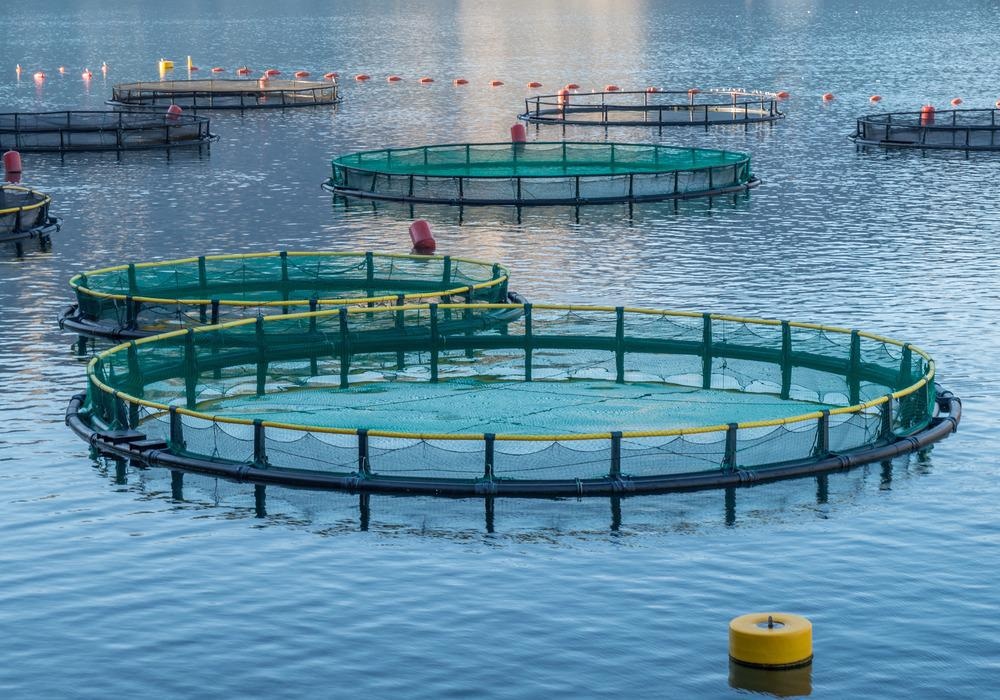In a research article available as a pre-proof in Chemical Engineering Journal Advances, researchers reviewed the potential benefits of incorporating nanofiltration and nanomembrane technologies into recirculating aquaculture systems (RAS).

Study: Potential of nanofiltration technology in recirculating aquaculture systems in a context of circular economy. Image Credit: Ranko Maras/Shutterstock.com
Due to its important features and recent advancements, nanofiltration (NF) may be optimized for use in intensive RAS.
In theory, nanofiltration membranes may contain soluble contaminants, off-flavor chemicals, and inorganic substances, and be employed in RAS to remove them. However, the use of water and the need for pre-treatments remain challenges for NF in RAS.
Furthermore, NF membranes only absorb a part of ions and non-toxic organic detritus, potentially harming farmed fish. Therefore, it is hard to envisage NF replacing present biological treatments. However, ongoing NF advancements should facilitate its application in RAS therapies.
Aside from cleaning side-streams of pollutants from fish tanks, NF appears to be an effective way to prevent unwanted chemicals from collecting and reaching critical levels in the water loop.
Drawbacks of Wastewater Discharges Produced by Fish Farming
Effluent discharges created by fish farming and aquaculture have the potential to contaminate surface waters with contaminants. Because they may incorporate residual feed, biological waste materials like ammonium and urea, medicines, and other pollutants of developing concern.
Recirculating Aquaculture Systems (RAS)
Recirculating aquaculture systems have been steadily implemented in fish farming during the last few years. The constant purification and recirculation of wastewaters from the fish tanks reduce water usage and sanitation facilities in such land-based plants.
The fish tank waste is treated with a succession of techniques in a RAS loop, to remove unwanted compounds and microorganisms and adjust water constitution before utilization. In a nutshell, the water from the fish tank is filtered mechanically to remove the majority of the dissolved solids.
The effluent next undergoes one or more microbiological treatments to lower the amount of organic matter and biological oxygen demand.
Biological Treatments Associated with RAS
As even low levels of urea can be detrimental to most fish and shrimp species, the biological treatment also serves to nitrify the potentially poisonous urea.
The final products of the denitrification, nitrate ions (and to a lesser extent, nitrite ions), begin to accumulate in RAS. This problem can be solved by replacing a portion of the loop's water with freshwater or adding a biological nitrogen removal step.
Following the biological treatments, the effluent is cleansed of generated CO2 and N2, while the oxygen content is elevated to a level that is ideal for fish growth.
Wastewater is disinfected with UV light before being recirculated in the fish tank to remove bacteria and other (micro)organisms that could affect the fish culture. Other possible procedures include adjusting the wastewaters' pH, acidity, and temperatures.
Advantages of RAS
Aside from the usual advantages of reducing water use, RAS has several benefits over standard linear systems.
Indeed, RAS allows for the collection of effluent and the management of cultivation conditions, allowing for the relocation of fish farms closer to their respective areas and a reduction in their environmental impact. Furthermore, land-based RAS greatly limit the dangers of virus transfer and migration of farmed species into natural waters.
Limitations of RAS
RAS is generally more costly than conventional systems, and variances in water content or the mishandling of purifiers, which can result in the accumulation of undesired biomolecules in the water loop, have a significant impact on the well-being of the sea creatures and the flavors of their meat.
Full Recirculation of Water for Economic Stability
As a percentage of water is dropped with the solid particles waste after the mechanical purification process, and because many processes use clean water to regulate contaminants such as off-flavor substances, inorganic pollutants, highly harmful constituents, nitrites, and other pollutants, many systems use freshwater to control unwanted substances.
The current shift to a circular economy, which seeks to minimize wastage and strain on natural resources like water, is accelerating toward super-intensive RAS with 99.6% or higher water recirculation.
High recycling rates, on the other hand, increase the risk of unwanted chemicals developing in the loop, making RAS extremely dependent on its extraction and purification systems.
Advantage of Nanofiltration
The membrane technique offers great ability to significantly improve present RAS approaches.
The use of microfiltration and nanofiltration membranes to lower the percentage of scattered and soluble organics in effluent has recently been suggested.
NF membranes can be used to filter RAS discharge side-streams to keep pollutant species in the loop at levels that are suitable for human and fish health.
Research Findings and Conclusion
Nanofiltration is already a well-established filtration method, with a large variety of elastomeric NF membranes on the market.
New resources, such as monomers, ceramics, and composites, are also being explored to push the permeation transfer of NF membranes beyond its current restrictions and to include new capabilities into NF systems.
Manufactured membranes can already absorb off-flavor chemicals and contaminants of increasing concern, which are important for RAS, according to the present literature. Furthermore, because NF membranes can partly reject urea, ammonia, and nitrate ions, their use in the regulation of artificial oxidation products in the RAS loop is feasible.
Reference
Boffa, V., Fabbri, D., Calza, P., Revelli, D. and Christensen, P., (2022) Potential of nanofiltration technology in recirculating aquaculture systems in a context of circular economy. Chemical Engineering Journal Advances, p.100269. https://www.sciencedirect.com/science/article/pii/S2666821122000308
Disclaimer: The views expressed here are those of the author expressed in their private capacity and do not necessarily represent the views of AZoM.com Limited T/A AZoNetwork the owner and operator of this website. This disclaimer forms part of the Terms and conditions of use of this website.